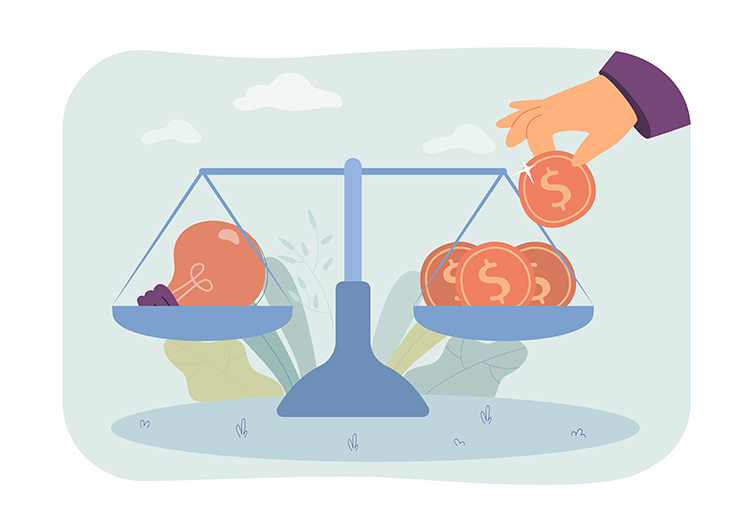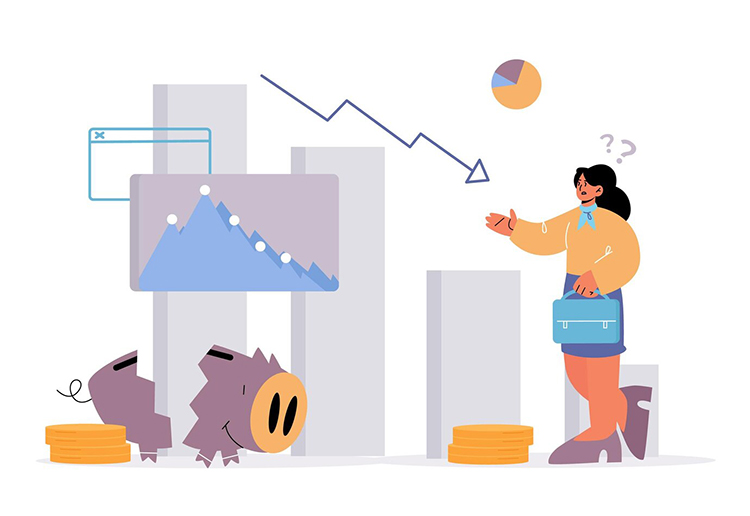content
Google Ads campaigns require not only creativity in content, but also an understanding of effective bid management strategies. The right bids can determine both the success and failure of your advertising campaign. Google Ads has two main strategies for setting bids: manual and automatic. For some marketers, the prospect of using AI tools to set bids causes stress and negative emotions, especially given the risk of uncontrolled budget overruns, so this practice should be approached with caution. In this article by ADV Advantage, we will analyze the advantages and disadvantages of both approaches and the best practices of their use.

Advertising campaign goals
Google is not so much interested in revenue from ad impressions as it is in improving the quality of ad campaigns and increasing the overall user experience. That’s why smart investments should be harmoniously combined with the right steps when developing an advertising strategy.
To do this, it is worth defining the goals of the advertising campaign:
- improving brand visibility on the Internet
- generating new customers
- increase sales (more conversions)
Next, we’ll look at how to set bids for Google Ads campaigns and what are the best practices for using automatic and manual bid assignment.
Manual Bid Assignment
Advantages:
- Control: Manual bidding gives you full control over how much a marketer is willing to pay per click or conversion. This allows you to choose which keyword auction to win and which one is better to save your budget on.
- Quick response: You can quickly change your bids in response to changes in the business environment or market conditions. An immediate response to instant changes is likely to maximize conversions during a period of chaotic market behavior due to global emergencies.
Disadvantages:
- Time consumption: Manual bidding requires time and attention to constantly monitor and make changes. Human resources are limited, so marketers have to sacrifice other tasks to monitor the bid auction and choose a bid assignment strategy.
- Limited accuracy: A marketer may not always correctly estimate the optimal bid, which can lead to the loss of possible conversions or overpayment for advertising. Unfortunately, in the world of PPC advertising, there are not only winners but also losers.
Automatic Bid Assignment
Advantages:
- Machine learning: Automatic Bid Assignment uses machine learning algorithms to optimize bids in real time, which maximizes the effectiveness of your campaign. To do this, you need to have an advertising account with a rich history of launching various types of advertising campaigns. Artificial intelligence requires large amounts of data to assign bids in the most efficient way.
- Efficiency: The ability to optimize bids according to various parameters such as conversions, ROI, or CPA allows to achieve more efficient results. Marketers don’t have to manually analyze data to make strategic decisions to improve conversion rates, ROI, or CPA.
- Accurate forecasting: Artificial intelligence, based on audience signals, is able to predict market behavior, adapting campaign parameters to predicted changes.
Disadvantages:
- Limited control: The marketer does not have full control over the bids the algorithm operates with.
- The need for training: Automatic bid assignment may require some time to train the algorithm and achieve optimal results.
- Delays: The Google Ads system synchronizes several times a day, but this is sometimes not enough if you need to make changes instantly.
- Aggressive changes: Google’s algorithms do not respond well to aggressive bidding or drastic changes in settings.

Best Practices
- Combination of approaches: You can use a combination of manual and automatic bidding to achieve optimal results. For example, manual bidding for keywords with high traffic volume and automatic bidding for less competitive keywords or different ad groups.
- Testing and optimization: Regardless of the strategy you choose, it is important to constantly test and optimize your bids by analyzing and responding to data about the results of your campaign.
- Strategic planning: Before launching a campaign, define your goals and key success metrics to help you choose the right bidding strategy.
Content quality: Since advertising creatives are targeted at a live audience, you should pay the most attention to the quality of advertising creatives. Ask yourself the question: “Will my ad resonate with the target audience?”. - Choose the proposed strategy: The Google Ads account assistant offers ready-made practices: target CPA (cost per acquisition), target ROAS (return on advertising to advertising costs), and increased conversion. Simply choose the most favorable model of advertising campaign behavior and set aside time to analyze the work of the algorithms.

Conclusion
The choice between manual and automatic bidding in Google Ads depends on your goals, resources, and comfort level with risk. Both approaches have their advantages and disadvantages, but it is important to know how to effectively use both to achieve optimal results in your ad campaigns. Remember to continuously test, analyze, and optimize to continuously improve the effectiveness of your advertising strategy. If you have any questions regarding manual and automatic bid assignment, please contact ADV Advantage specialists for advice by leaving your contact information in the Contact Us section.
Subscribe to our newsletter



